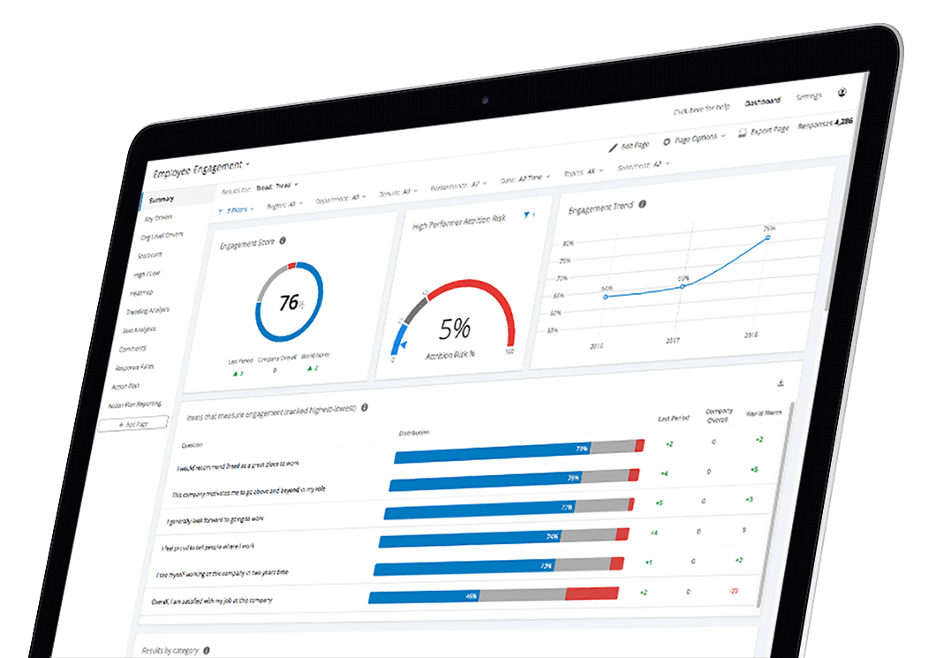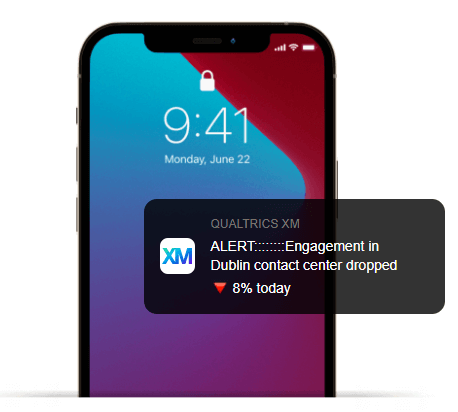What is artificial intelligence in HR?
64% of people trust a robot more than their manager. No, this isn’t the strapline for a sci-fi movie, it’s the current state of artificial intelligence as used in HR departments. But first some definitions so you can appreciate the power and potential of AI technology that your HR teams can harness:
1. Artificial intelligence
Humanlike thought processes as simulated by computer systems.
2. Machine learning
An application of artificial intelligence that enables algorithms in computer systems to access data, learn from experience, and develop themselves without being externally programmed by a human.
3. Deep learning
Inspired by the complex workings of the human brain, deep learning is an extension of machine learning where algorithms are layered to create artificial neural networks that can make ‘intelligent’ decisions.
HR professionals used to be drowning in a sea of paper CVs, spreadsheets of interviewees, interview notes, employment contracts, training programs and disciplinary procedures. They would spend hours interviewing long lists and shortlists of candidates, who may or may not turn out to be ideal for the job.
All these processes, performed by HR managers and their teams, were immensely costly in terms of time and money.
Now, AI in HR can:
- Stop attrition in its tracks: by identifying behaviours that suggest an employee may about to quit, so that managers can intervene and try to retain them
- Personalise employee experience: to put workers through the right training programs and onto the best career paths throughout their entire employee lifecycle
- Enhance employee engagement with feedback: using employee listening
- Pick up anomalies: leveraging AI to identify blips and unusual events in data, and step in with real time responses to avoid problems and implement solutions
- Deploy chatbots: through the magic of natural language processing (NLP), chatbots can help automate HR service delivery
- Increase communication efficiency and time: AI is great at helping formulate communications and articulate messages, which can help save HR quite a bit of time from not having to wordsmith.
- Resolve issues with conversational analytics: deep learning has become so sophisticated that AI can recognise and respond to the human voice, enabling problem resolution in real time
Automate HR data to work for your business needs
AI in HR management
Artificial intelligence in HR can take away the time-consuming tasks in the hiring process, such as filtering applicants’ skill sets, qualifications, competencies, experience and cultural fit, to ensure best fit for vacant roles.
AI can then assist in new hires’ onboarding process by settling them in with personalised emails, necessary paperwork, scheduling meetings and even pairing them with the most suitable work buddy to help them learn the ropes.
Coaching employees is where HR technology AI systems really come into play: each individual employee has their own feedback loop so they can interact with HR practitioners, and managers to learn and improve.
“Nobody phrases it this way, but I think that artificial intelligence is almost a humanities discipline. It’s really an attempt to understand human intelligence and human cognition.” — Sebastian Thrun, Adjunct Professor, Stanford University
Artificial HR intelligence in recruiting
According to Zippia, the costs of a bad hire can be incredibly expensive for a company:
- 30% of the new hire’s annual salary
- An average of $14,900 loss
- As much as $240.000 loss
- $4,425 to recruit a replacement
- At least six months to break even on the cost of new hires
Traditional recruitment is also time consuming, with long waiting times on approvals, screenings, interviews and decisions. The interview process itself has become predictable, generic, and full of bias – things that are no longer acceptable in today’s data-driven business world.
Using AI to improve talent acquisition will enhance your ability to select the right people at just the right time, and avoid costly hiring mistakes.
Ways that AI adds value to your HR department include:
Identifying vacancies
Even before you write a job description, AI can be at work processing and predicting talent and skills gaps within a company: who is going to leave, which department is expanding, and how many new hires will be required. HR can then focus on the more important tasks of sourcing and hiring.
Sourcing and screening suitable candidates
AI can help match suitably skilled and experienced candidates with job requirements by scanning resumes and matching them to job descriptions.
It can do this with natural language processing (NLP) that matches keywords in resumes with job descriptions, automatically eliminating unsuitable candidates. HR managers can then concentrate on finding not just qualified employees, but the best employees.
In the same way, HR professionals can alert people who have the right qualifications and skill sets that a vacancy is coming up, and invite them to apply.
Interviewing
The use of AI-powered digital assistants puts the candidate more in control of the interviewing process, and ensures great communication between company and candidate. They can schedule meetings, be sent reminders, interact with the company, and provide resources or portfolios ahead of interviews.
After an interview, candidates can provide survey feedback to help the human resources department make their hiring process better.
Selection and job offering
This is one process that shouldn’t be left to AI. A real person from human resources must make informed decisions about talent acquisition, and select the best candidates. They can, however, be helped by:
- data from AI, such as benchmarking, to see how the candidate compares with the organisation’s best performers
- predictive analytics that can predict how likely a candidate is to accept a job offer, how well they’ll perform, and how long they’ll stay
Onboarding
Get onboarding wrong, and all your HR professionals’ hard and costly work recruiting the best person is for nothing, if a dissatisfied employee quits within a year of joining your organization.
- Nearly 1 in 5 employees quit in their first week
- Just 12% of employees believe their employer’s onboarding process is adequate or successful
- Employees who had effective onboarding feel up to 18x more committed to their workplace
- 89% of respondents said an effective onboarding process helped them feel very engaged at work, and
- These employees are 30x more likely to feel overall job satisfaction
AI really comes into its own to create that crucial, successful onboarding experience:
Tedious but necessary paperwork such as contracts, policies, can be exchanged, read and signed digitally, and reminders sent.
Digital assistants walk new hires through the necessary onboarding stages and guide them to the next stages.
The necessary training and skills for each individual in their job position can be personalised and set up.
The right mentor or buddy can be identified to support the new employee through onboarding and beyond.

Artificial intelligence in training and development
Gitnux finds that AI is estimated to replace 85 million jobs by 2025, but 97 million new jobs will be created due to AI, and 93% of HR leaders and employees in the US are open to training delivered via AI.
So, AI is not, in essence, a threat to employment, but rather an opportunity. AI will not replace all jobs, but it will have a major impact on how many jobs are performed. It’s important for companies to prepare for this potential shift in the labor market by developing the skills and knowledge necessary to remain productive and competitive into the future.
“There is always a wave of concern and fear about job loss and whether or not there will be mass unemployment. In fact, unemployment is at a record low right now.
What AI is doing is changing the way that we do work. One thing we are looking into at Stanford is keeping humans in the loop. ”
— Erik Brynjolfsson, Jerry Yang and Akiko Yamazaki Professor; Director, Digital Economy Lab, Stanford University
Many organisations are open to training delivered via AI, which will help to bridge the gap between the jobs that are lost to AI and the new jobs that it helps create.
The stakes have never been higher for training a workforce to face the challenges of automation. And AI itself can assist with this, through:
Personalised learning
Because AI offers huge potential for personalised learning and development, deploy it to make training employees more engaging and meaningful. AI collects data about an employee’s:
- Skills
- Work style
- Learning style
- Projects
- Responsibilities
Then, it makes recommendations for personalised training, such as digital coaching in presentation skills, that brings out the best in that employee, enhancing their productivity and competence.
Collaboration
This is essential in a modern workplace, particularly different departments learning from each other for a holistic experience. Workplace culture also benefits from interdepartmental team learning, and AI can pair teams in the most efficient way possible.
Learning administration
Once one of the more tedious practices for the HR department, admin can now be done with AI and automation. Data will reveal how learners engage, interact, and then implement their learning, giving leadership insight into the outcomes training programs deliver for businesses, and their return on investment (ROI).
Artificial intelligence in employee experience
Highly engaged employees, who are enjoying great employee experience, are 87% less likely to leave their employer.
For an organisation to master employee experience (EX), it must listen to its people at each stage of the employee lifecycle and create personalised experiences. This is where AI can assist HR departments:
Combine O- and X-data: You’ll gather a vast amount of O-data (operational data) from an employee throughout their time at the company – from basic personal details, to training they’ve received and their salary history. When you combine that with X-data (what that employee tells you about their experience) you will unlock greater insights into why things are happening in your business, and what you can do better.
Listen to your employees: Use regular pulse surveys and open feedback platforms powered by AI. Include candidate interviews, engagement surveys, ongoing performance conversations, annual performance reviews, and exit interviews to gather real-time understanding of the issues your employees face.
Balancing technology and the human connection in HR
When you choose the Qualtrics EX platform, you have AI automation at your fingertips. Our powerful, yet easy-to-use analytics tools help your HR professionals automatically uncover what drives employee experience, and influences customer success and business performance the most.
Combine our XM platform, EX benchmarks, and your own data to see how your organisation stacks up against the competition. And with XM Discover, the world’s most advanced conversational analytics, you‘ll get omni-channel listening, natural language processing, smarter chatbots, and AI-powered automation.

Our narrative-based dashboards and powerful planning tools, we’ve made it incredibly easy for HR leaders to help empower a productive workplace, understand employee experience levels, and identify where and how leaders can act to maximise business impact, retention, and employee employee experience – without losing the human touch.
Automate HR data to work for your business needs